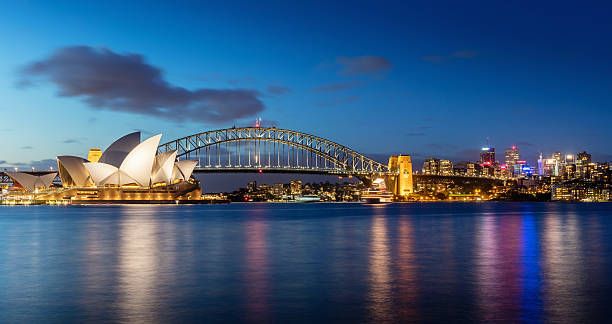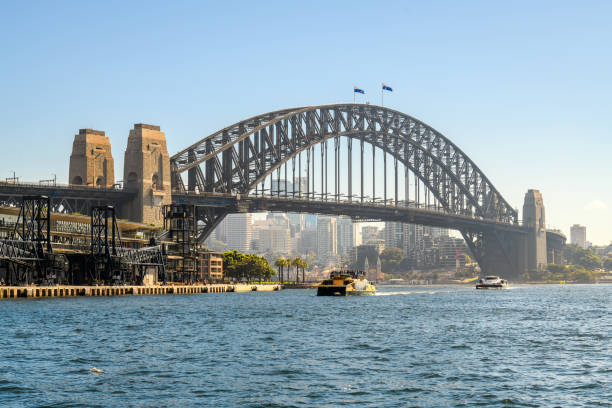
Exploring the Multifaceted Roles of the Sydney Harbour Bridge
The Sydney Harbour Bridge is not only an iconic landmark but also a vital piece of infrastructure that connects the Sydney central business district (CBD) with the North Shore. Opened in 1932, the bridge serves multiple purposes, primarily facilitating transportation, promoting tourism, and contributing to the cultural significance of the city. It stands as a testament to engineering marvel and has overseen countless historical moments, becoming an emblem of Sydney and Australia as a whole.
Transportation and Connectivity

The primary purpose of the Sydney Harbour Bridge is to provide a transportation link across Sydney Harbour. Before its construction, the only way to travel between the CBD and the North Shore was by ferry or a 20-kilometre (12 mi) detour around the harbour. The bridge significantly cut travel time, promoting the development of residential and commercial areas on the North Shore. It carries a multitude of transport forms including:
- Rail traffic, with a set of tracks that enables the passage of passenger trains.
- Vehicle traffic, with multiple lanes designated for cars, trucks, and buses.
- Bicycle paths, allowing cyclists a safe crossing separated from the bustling vehicle traffic.
- Pedestrian walkways, offering safe transit and extraordinary views for walkers and tourists alike.
Economic Impact
Since its opening, the Sydney Harbour Bridge has had a substantial economic impact on the city. It has facilitated commerce by enabling quicker transport of goods and people across the harbour. The bridge has also been beneficial to Sydney’s development. Real estate on both sides of the bridge prospered due to improved accessibility. Moreover, its construction provided employment during the Great Depression and has continued to contribute to the economy through toll revenue. Key economic impacts include:
- Creation of jobs and stimulation of economic activity during and after its construction.
- Appreciation of property values due to improved access facilitated by the bridge.
- Support for businesses in the North Shore and CBD due to increased customer access.
- Continuous maintenance and upgrades that contribute to ongoing employment opportunities.
Tourism and Cultural Significance
The Sydney Harbour Bridge is an integral part of Australia’s cultural fabric and a major tourist attraction. It contributes to the tourism industry not just as a sight to behold but also through activities such as the famous Bridge Climb, where visitors can scale the structure for panoramic views of the harbour and city. Its distinctive arch-based design has made it a symbol of architectural excellence. Cultural significance is further enhanced through various key roles:
- Serving as a focal point for spectacular New Year’s Eve fireworks displays.
- Hosting cultural events and celebrations throughout the year.
- Featured role in films, television, and on postcards, promoting Australian culture globally.
Engineering and Design
The bridge’s construction was a ground-breaking feat of engineering. Its design, by British firm Dorman Long and Co Ltd, came down to a combination of aesthetic appeal and functional robustness. The Sydney Harbour Bridge was the world’s widest long-span bridge at the time of its completion and is still the largest steel arch bridge today. It required innovative techniques, including:
- Use of creeper cranes to move outwards as the arches were built.
- Creation of massive hinge bearings to allow the steel to expand or contract with temperature changes.
- Precise construction methods to ensure the two arches met perfectly at the centre.
Environmental Considerations
Environmental sustainability was not a major consideration at the time Sydney Harbour Bridge was built. However, in recent years there has been a focus on the environmental impact of the bridge. Measures have been implemented to reduce traffic congestion through tolling and encouraging the use of public transport. Efforts are ongoing to integrate the bridge within the broader environmental considerations of the city, such as:
- Promotion of walking and cycling as eco-friendly transport options.
- Use of modern maintenance techniques to preserve the bridge’s integrity with minimal environmental disruption.
- Inclusion in broader city plans aimed at reducing carbon emissions and managing traffic flow efficiently.
Conclusion
The Sydney Harbour Bridge serves as a historical monument, an infrastructural backbone, a cultural emblem, and a beacon for tourism. It connects the city physically and emotionally, symbolizing the ingenuity and resilience of Sydney and its people. The bridge has evolved over the years to become more than just a crossing point; it is a lively public space, a tourist destination, and an integral piece in the urban landscape of Sydney. Examining its multifaceted roles reveals how the Sydney Harbour Bridge is vital to the city’s past, present, and future.

